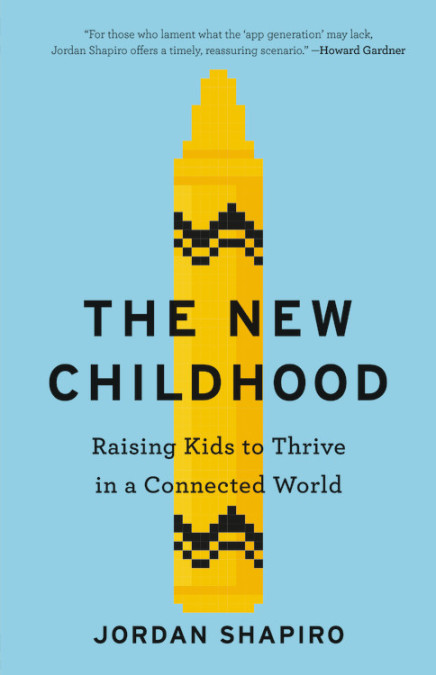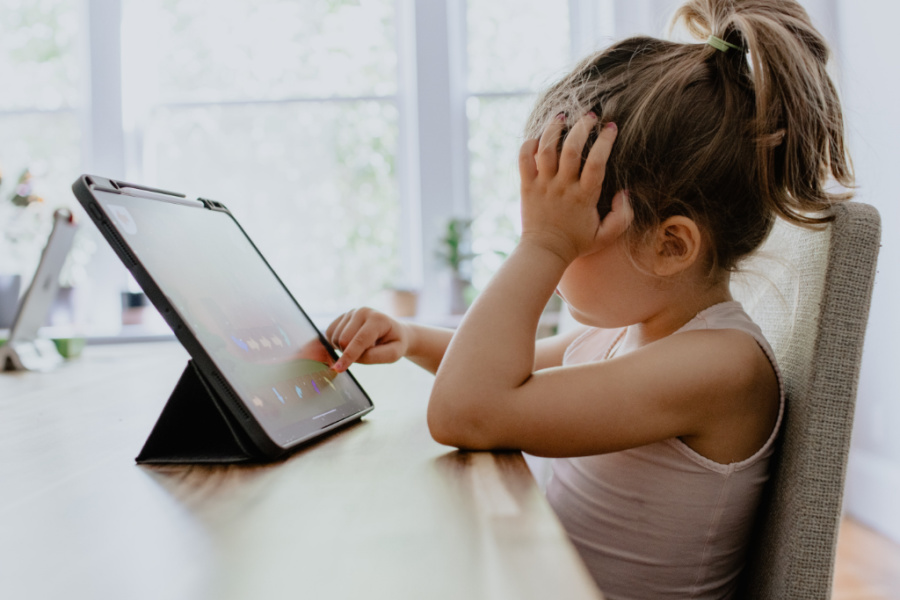Over the last month, we’ve been getting bombarded with all sorts of posts about kids and screen time, from articles telling us that we’ve got a big problem on our hands to ways to feel okay about all the screen time. If you’re like me, it feels like you’re watching a tennis match, with your head going back and forth to the point where you’re starting to get dizzy.
We’re seeing it in our Out-Tech Your Kids Facebook Group too; 95% of the posts are about screen time, and it makes sense. Screen time has always been a point of guilt and shame for parents, but now with the pandemic, we’re watching our kids spend almost every waking hour on some sort of gadget and it feels really heavy.
I’ve been struggling with this personally, as a single mom who is working from home with four kids doing cyber school, and trying to figure out how to navigate screen time in a way that doesn’t add another thing I have to do. I’m also trying to be compassionate — to my kids and myself — knowing that screens are giving all of us socialization and a much-needed escape.
Related: 5 benefits of kids and social media

I decided that I needed to make some changes, so I picked up The New Childhood by Jordan Shapiro, one of my favorite books about digital parenting and screen time, re-listened to his Spawned podcast appearance, and chatted with him about screen time management for a few minutes on Zoom. If you haven’t read the book yet, it’s a remarkable look at what it means to raise a digital native, and how our own experience and bias as a non-digital native could be affecting how our kids use and engage with screens. The podcast episode is one of my favorites, in which he chats about the idea that maybe we don’t necessarily need to be “managing” their screen time, so much as we need to approach it from a value-based system. That was reinforced when I chatted with him recently.
This idea is that we consider skipping the intricacies of managing minutes spent on video games and Facetime and YouTube and phones by creating a value-based system that involves kids participating in any number of activities that are important to your family. That means, things like: spending time outside, reading, getting exercise, doing chores, doing school and homework, participating in a non-screen creative activity or soft fascination hobby, eating dinner together, engaging in family time…you get the idea. Simply creating a list (or if you’re fancy, a prominently-displayed board or sign) that shares your family’s values (which by the way could include digital time, especially since we’re in 2021!) and making sure your kids know that all of these things need to be a part of their day.
At first, this might be a little difficult, because if your house is like mine, then a lot of this stuff has been put on the back burner since the pandemic started. That’s okay. It’s a freaking pandemic.
But if you’re willing to make the effort, set an example for your kids by doing them yourself (and in many cases, WITH them), and reinforce this (perhaps with a daily checklist until they get the hang of it?), then you might find that they adopt these values pretty quickly into their own daily routine – something, by the way, that will make them healthy adults, too. Isn’t that the goal of parenting in the first place?
The temptation might be to make screen time the reward – as in, you did all of these things, now you may have your screens – and it might be that at first, that’s the motivating factor. Though, I’d like to think that they’ll find joy in having some sense of normalcy, in being active, in being given the freedom to learn balance. But ideally, screens fit into their lives naturally – checking texts after they’ve been outside for an hour playing in the snow, or showing you a funny video they saw at dinner, or watching a video on how to use their new weaver (or maybe that’s just my daughter)?
Related: 5 approaches to creating screen time rules in your home

Parents are still working so hard to create this black and white – no screens/screens – world, and we’re not giving our kids opportunities to learn, grow, explore, and create during their off-screen time. We want them to not be on screens, but then, what should they be doing? – are we engaging with them about a cool book, are we helping them cook in the kitchen, are we encouraging them to have non-competitive hobbies? And, a little truth telling here: Are we on our screens too damn much and not doing all of the things on that list? You see where I’m going here.
Using a value-based approach to screen time teaches them kids balance, shows them the other things that we value (as a family and as human beings), and helps them learn that delicate dance that quite frankly we all need. How lucky they will be to have learned it well before hitting adulthood.
Top photo by Kelly Sikkema on Unsplash







Do you have examples of how to teach it in this way? I like the idea but am not sure how to implement it.